
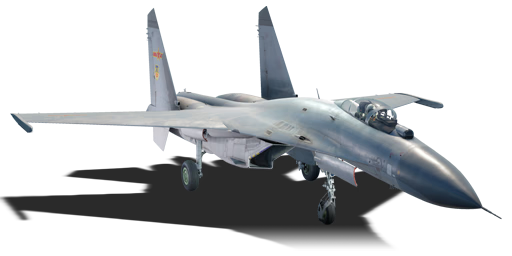


The J-11 (歼-11型歼击机; NATO Codename: Flanker-B), aka Su-27SK by Sukhoi or 苏-27 in PLAAF manuals, is one of the main composition of the PLAAF's modern interceptor fleet since the early 1990s as the overseas solution to upgrade the outdated PLAAF. By 1989, soon after the improving of Sino-Soviet relationships and the nationwide riots during the economic reform, the only viable solution to upgrade PLAAF was from USSR due to the subsequent embargo imposed by NATO countries; a group of military staffs of PLAAF soon departed for the USSR to import the latest Soviet interceptors on May 1990. Initially, the VVS promoted the MiG-29 to Chinese generals during their visit to Kubinka Airbase, but the generals soon spotted the state-of-the-art interceptor Su-27S at the airbase made the PLAAF go for the Flanker. After a series of meetings since during June to September of 1990, the deal was set to purchase the 38th batches at around USD $1 Billion for 24 jets (18 Su-27SK and 6 UBK twin-seater) by March 1991 and 39th batches of 22 Su-27S respectively. After the fall of the Soviet Union, the PLAAF saw the possibility to purchase the production license of the Su-27SK in 1993. After threats that no further jets would be ordered from KnAAPO and a long negotiation with the now-Russian Federation, the new deal was set for 200 Su-27SK assembled by SAC within 15 years since 1996. The licensed Su-27SK, now called J-11A would increase domestic production rate through the 5 batches. The design of Flanker alongside with its blueprints and punched tapes were further refined by Chinese engineers with the help of CAD that was first used on J-10 and later JH-7A, revising the redundancies of the original design and eventually set the foundation for the J-11B (Flanker-L) and future Flanker derivatives.
Introduced in Update "Air Superiority" as part of the upgrade, the J-11 shares a close to identical performance to its Soviet counterpart (while 570 kg heavier). Thanks to its well refined aerodynamic design, power engines, loads of A-A weaponries and sufficiently powerful radar/IRST, the J-11 leads the PLAAF into the current apex of air battles. While its sheer size and inferior electronics can be a problem in different occasions, the J-11 will not disappoint players with Flanker's iconic features.
flaps
flaps
flaps
brake
| Belt | Belt filling | Armor penetration (mm) at a distance: | |||||
|---|---|---|---|---|---|---|---|
| 10 m | 100 m | 500 m | 1000 m | 1500 m | 2000 m | ||
| AP-T/HEF-I | 55 | 53 | 45 | 37 | 31 | 25 | |
| AP-T/HEF-I/APHE/HEF-I | 55 | 53 | 45 | 37 | 31 | 25 | |
| AP-T/APHE | 55 | 53 | 45 | 37 | 31 | 25 | |
| AP-T/HEF-I/HEF-I | 55 | 53 | 45 | 37 | 31 | 25 | |
| APHE/HEF-I/HEF-I | 42 | 40 | 34 | 28 | 23 | 19 | |
| Name | Weight | Slot | ||||||||||
|---|---|---|---|---|---|---|---|---|---|---|---|---|
| 105 kg |  |  |  |  |  |  | ||||||
| 114 kg |  |  | ||||||||||
| 268 kg |  |  |  |  |  |  |  |  | ||||
| 253 kg | 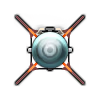 |  |  |  |  |  | ||||||
| 350 kg |  |  |  |  |  |  | ||||||
| 245.5 kg | 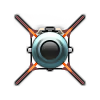 |  | ||||||||||
| 343 kg |  |  | ||||||||||
| 6 × | 684 kg | 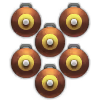 |  |  |  |  |  | |||||
| 6 × | 1,608 kg | 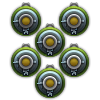 |  | |||||||||
| 227 kg |  |  |  |  |  |  | ||||||
| 275 kg |  |  |  |  |  |  | ||||||
| 508.3 kg |  |  |  |  |  |  | ||||||
| 515 kg |  |  |  |  |  |  | ||||||
| 374 kg |  |  |  |  |  |  | ||||||
| 20 × | 376 kg |  |  | |||||||||
| 5 × | 505 kg |  |  | |||||||||
| 370 kg |  |  | ||||||||||
| 367 kg |  |  | ||||||||||
| 367 kg |  |  | ||||||||||
| 2 × | 536 kg | 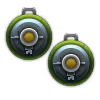 |  |  | ||||||||
| 2 × | 454 kg |  |  | |||||||||
| 2 × | 550 kg |  |  | |||||||||
| 2 × | 1,016.6 kg | 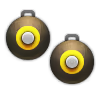 |  | |||||||||
| 2 × | 1,030 kg |  |  | |||||||||
| 2 × | 748 kg |  |  | |||||||||
| 40 × | 752 kg |  |  | |||||||||
| 10 × | 1,010 kg |  |  | |||||||||
| 2 × | 740 kg | 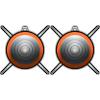 |  | |||||||||
| 2 × | 734 kg |  |  | |||||||||
| 2 × | 734 kg |  |  | |||||||||
| 5 × | 1,340 kg | 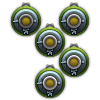 |  | |||||||||
| 4 × | 1,072 kg | 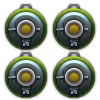 | ||||||||||












Flight performance | |
|---|---|
Survivability |
|---|
Weaponry | |||
|---|---|---|---|